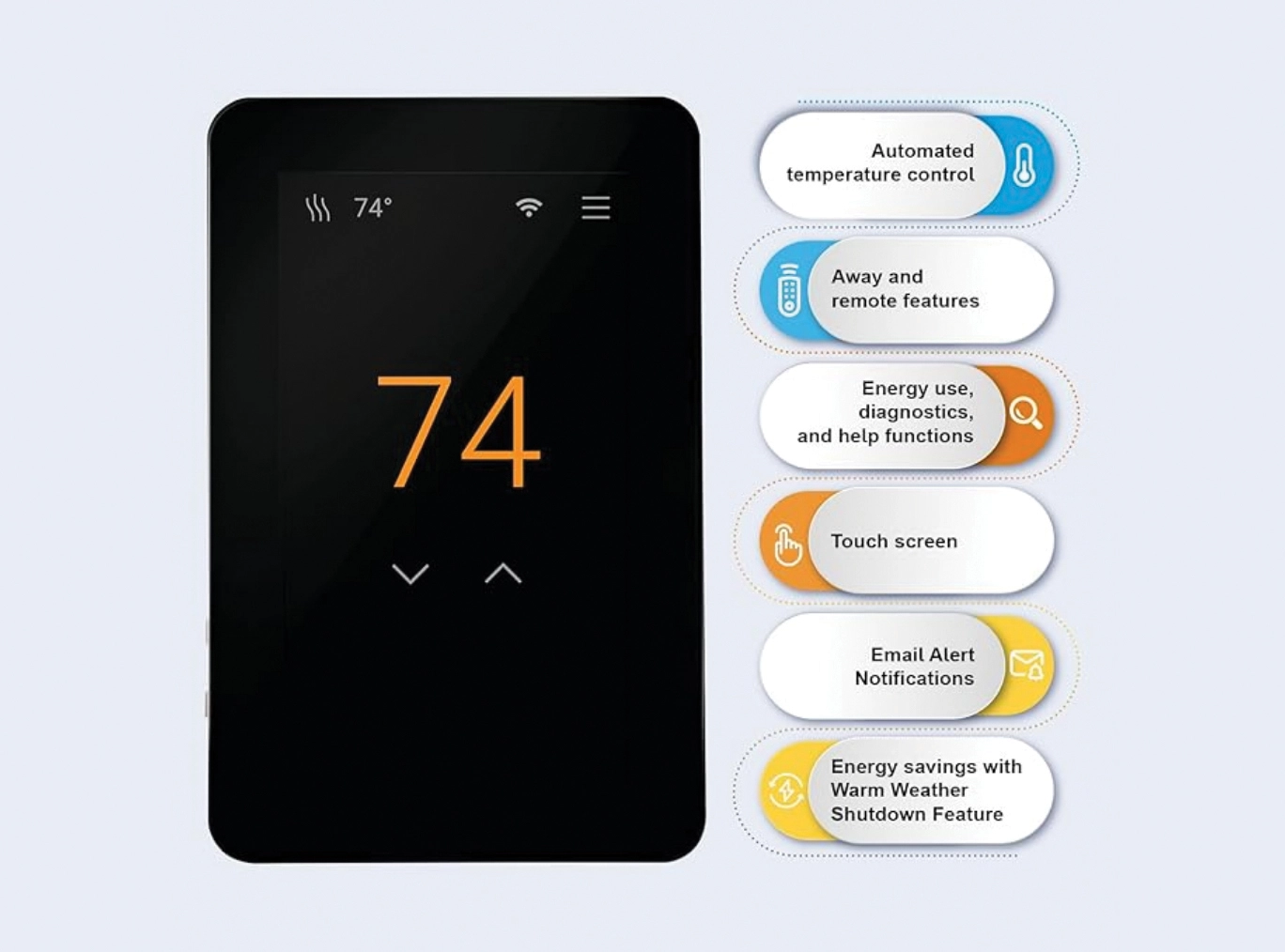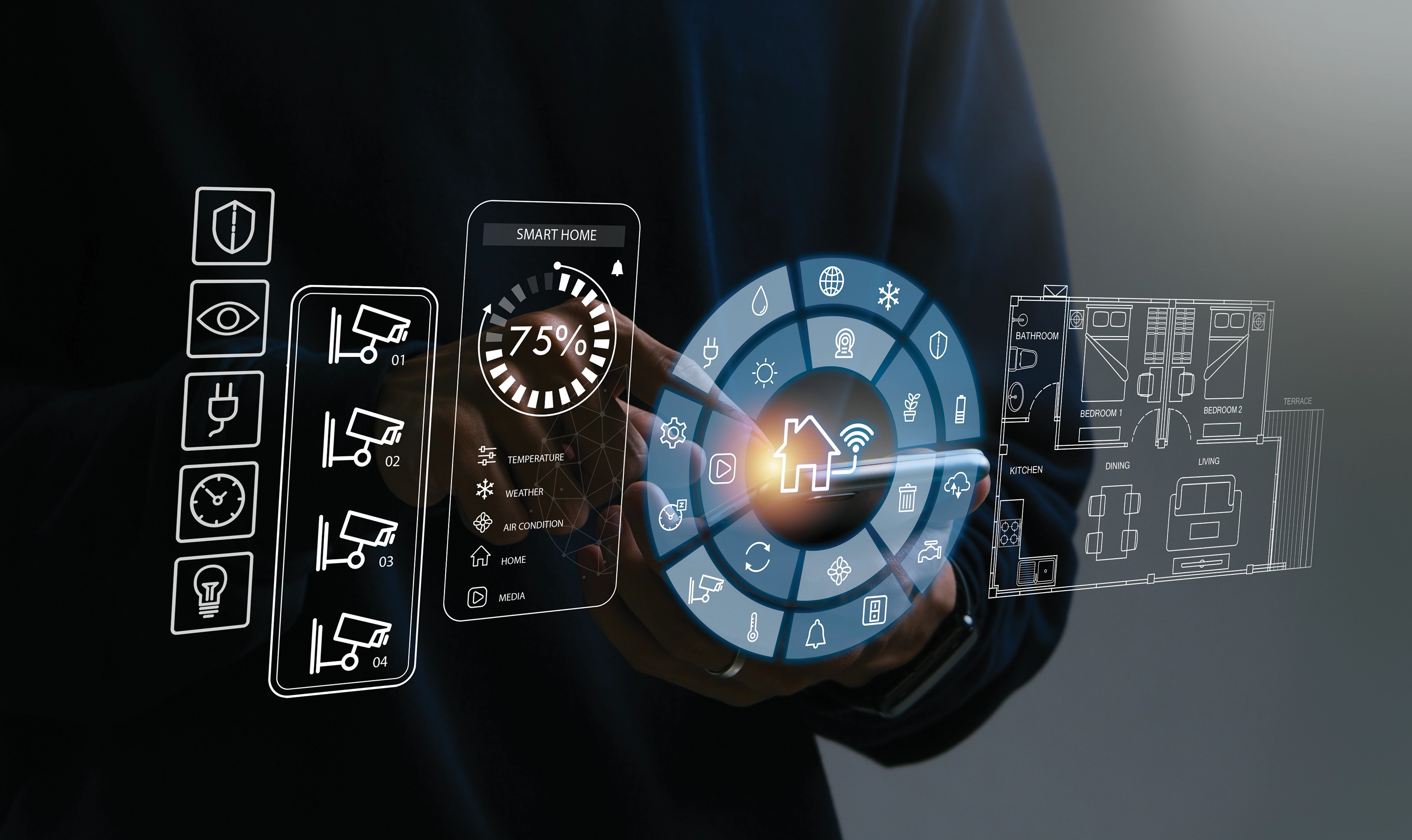When you think of industries offering the latest technology, computer software, social media, and cell phone companies may come to mind first. But when I reflect back on my 27 years in the residential HVACR industry, I realize we too keep up with the times.
One way we keep up with innovations is through thermostats in customers’ homes. Over time we have seen the transition from mercury and bi-metal thermostats to digital, programmable, and now Wi-Fi thermostats with onboard alerts. There are several hurdles that must be overcome in order to fully convert these new developments in thermostats and controls into HVACR sales. To be successful selling thermostats and controls, you must educate your employees about the new technologies, and convince your technicians to not just sell but also fully embrace them. Every time your technicians enter a home they have the opportunity to discuss the merits of new thermostats with customers. If they don’t, you miss out on potential add-on sales.
What Are the New Technologies?
As you all know, the current industry standard is a digital thermostat that offers no programming. These digital thermostats simply heat and cool. The benefit is more precise temperature control. Programmable digital thermostats offer cost savings by allowing the customer to program less energy use when away from home. I’ve been surprised by how many customers are not aware of the energy savings they can achieve with programmable thermostats. This is one reason we believe training our technicians to provide this information will lead to significantly increased add-on sales as we take advantage of this great opportunity to educate customers about their options. I’ll address specifically how we train our technicians later in this article.
The newest option is the Wi-Fi thermostat, which connects to the customer’s in-home wireless network. In the coming years, connectivity will be the single largest change in our industry. It will be great for customers and contractors on a number of different levels. For the customers, they’ll have the ability to control their system(s) from down the street at the grocery store – or on another continent– just by using their smartphones. For those of us in the contracting business, our ability to diagnose problems over the Internet before sending a service technician out on a call will bring us huge cost savings while increasing productivity.
Many of you saw the news in January that Google entered an agreement to buy Nest Labs, a producer of smart thermostats and smoke alarms, for $3.2 billion. Nest launched just three short years ago. If Google is investing in thermostats, I think it’s a sure bet that contractors should be talking about them on every service call. While some customers may be aware of the new technologies, many will be seeking advice from contractors they know and trust – making technology a topic that can help separate your firm from others.
Today, even do-it-yourself, big box stores offer smart thermostats. To keep up, contractors need to embrace this technology, as well as train and incent their technicians to make add-on sales. The new generation of homebuyers has grown up with smartphones. Look around in public and see how many heads are buried in smartphones. It’s amazing! We’ll lose sales if our teams aren’t prepared to offer products that appeal to them.
My company put the latest Wi-Fi thermostats in our price books and they will be a standard offering to our clients this year. My location is a corporate location for Direct Energy. Often we work with Direct Energy to test new products and services that may be introduced to our franchise network across the United States. Last summer we worked with Direct Energy Residential to test pilot several different Wi-Fi thermostats to find one that best suits our customers’ needs.
Technician Training
We train our technicians to discuss the benefits of the latest thermostats and control technologies with customers. We emphasize the energy and money savings they offer, their ease of use, smartphone applications, and precise temperature control. These new products also offer customers peace of mind, as certain models can detect problems in the home. Customers are very keen on saving energy and the potential for financial savings. According to the EPA ‘s Energy Star program, customers can save roughly $1,880 over the course of the device’s 15-year life. We advise customers to use their programmable thermostats and schedule the times they adjust the temperature in their homes with work and school schedules. We show them how they can save money when the equipment is not operating while they are at work, away from home, or asleep.
Freebies to Gain Technician Buy-In
Technicians are more likely to introduce a new thermostat or control technology when they like the product and feel knowledgeable about it. I feel the best way for a company to further the sales of Wi-Fi thermostats is have your technicians put them in their homes. Owning the latest thermostats give technicians firsthand knowledge and experience with the products. Techs can then use their smartphones to show customers the benefits of Wi-Fi thermostats and controls.
Technicians also love incentives. I recommend building the incentive into the price of the thermostat to encourage technicians to offer it. Just talking about these products will lead to more conversions.
I think if you train your technicians to discuss the cost and energy savings, and best of all, the ability to control energy use anywhere there’s a cell phone signal, you will be successful in selling these add-ons.
6 Steps to Selling Energy Saving Thermostats
1. Train your technicians.
We conduct specialized training on how to relate the features and benefits of programmable thermostats and controls. We emphasize energy savings, money savings, and ease of use. Some homeowners haven’t realized that these features are available, and many technicians are not trained to share these benefits. Training frontline people is key to the success of an add-on sales program.
2. Begin at the beginning, when the technician arrives at the home.
Technicians should begin each service call by accompanying the homeowner to the thermostat and asking how they currently use it. This opens the door to discussing the benefits of programmable thermostats. Ask questions like: Do you work? How often are you home or away from home? What is a comfortable temperature for you? Would you like to control your thermostat from anywhere you are with your smart phone?
3. Leave the decision up to the homeowner.
We never do a hard sell with thermostats and controls. We offer several options to clients and we support their decisions. Offering the best quality service means making sure our customers understand all their options.
4. Make the install.
5. Program the thermostat while the customer is watching.
Get them involved in the programming process so they are familiar with how it works and have ample opportunity to ask questions before the technician leaves.
6. Leave the installation guide with the customer.
Most thermostat manufacturers have a number customers can call if they have questions on programming. Customers can also find many tutorials on YouTube. Have your technicians show customers where they can find this information in the installation guide. Many customers may be intimidated at first by programmable or Wi-Fi thermostats, but it’s like using a smartphone. Once you figure it out, it’s hard to imagine your life without it.
Energy and timesaving thermostats and controls can be profitable additions to your business. Many of our customers have service and maintenance agreements with us that get us into their homes twice annually. Each time we enter a home for routine maintenance, tune-ups, service, or replacement, we have the opportunity to sell a new thermostat. In business and in life, we need to take advantage of every opportunity we get!
Bill Fortner is General Manager of One Hour Air Conditioning and Heating in Houston, Texas. With the company since 1987, he’s held various positions including installer, service technician, new construction field supervisor, estimating manager, and service manager. Bill focuses on delivering an exceptional experience to customers and making One Hour Air Conditioning one of the most desired places to work. For more information, please visit: www.OneHourHoustonAC.com



